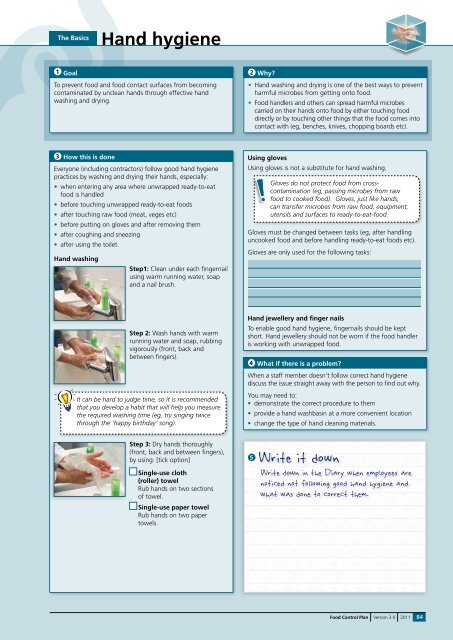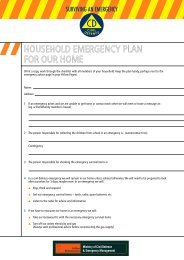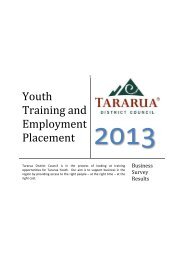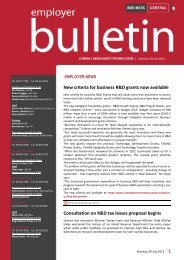Food Control Plan Checklist - Tararua District Council
Food Control Plan Checklist - Tararua District Council
Food Control Plan Checklist - Tararua District Council
- No tags were found...
Create successful ePaper yourself
Turn your PDF publications into a flip-book with our unique Google optimized e-Paper software.
The BasicsHand hygiene1 Goal 2 Why?To prevent food and food contact surfaces from becomingcontaminated by unclean hands through effective handwashing and drying.• Hand washing and drying is one of the best ways to preventharmful microbes from getting onto food.• <strong>Food</strong> handlers and others can spread harmful microbescarried on their hands onto food by either touching fooddirectly or by touching other things that the food comes intocontact with (eg, benches, knives, chopping boards etc).3 How this is doneEveryone (including contractors) follow good hand hygienepractices by washing and drying their hands, especially:• when entering any area where unwrapped ready-to-eatfood is handled• before touching unwrapped ready-to-eat foods• after touching raw food (meat, veges etc)• before putting on gloves and after removing them• after coughing and sneezing• after using the toilet.Hand washingStep1: Clean under each fingernailusing warm running water, soapand a nail brush.Using glovesUsing gloves is not a substitute for hand washing.Gloves do not protect food from crosscontamination(eg, passing microbes from rawfood to cooked food). Gloves, just like hands,can transfer microbes from raw food, equipment,utensils and surfaces to ready-to-eat-food.Gloves must be changed between tasks (eg, after handlinguncooked food and before handling ready-to-eat foods etc).Gloves are only used for the following tasks:Step 2: Wash hands with warmrunning water and soap, rubbingvigorously (front, back andbetween fingers).Hand jewellery and finger nailsTo enable good hand hygiene, fingernails should be keptshort. Hand jewellery should not be worn if the food handleris working with unwrapped food.4 What if there is a problem?When a staff member doesn’t follow correct hand hygienediscuss the issue straight away with the person to find out why.It can be hard to judge time, so it is recommendedthat you develop a habit that will help you measurethe required washing time (eg, try singing twicethrough the ‘happy birthday’ song).You may need to:• demonstrate the correct procedure to them• provide a hand washbasin at a more convenient location• change the type of hand cleaning materials.Step 3: Dry hands thoroughly(front, back and between fingers),by using: [tick option]Single-use cloth(roller) towelRub hands on two sectionsof towel.Single-use paper towelRub hands on two papertowels.5Write it downWrite down in the Diary when employees arenoticed not following good hand hygiene andwhat was done to correct them.<strong>Food</strong> <strong>Control</strong> <strong>Plan</strong> Version 3.0 2011B4







